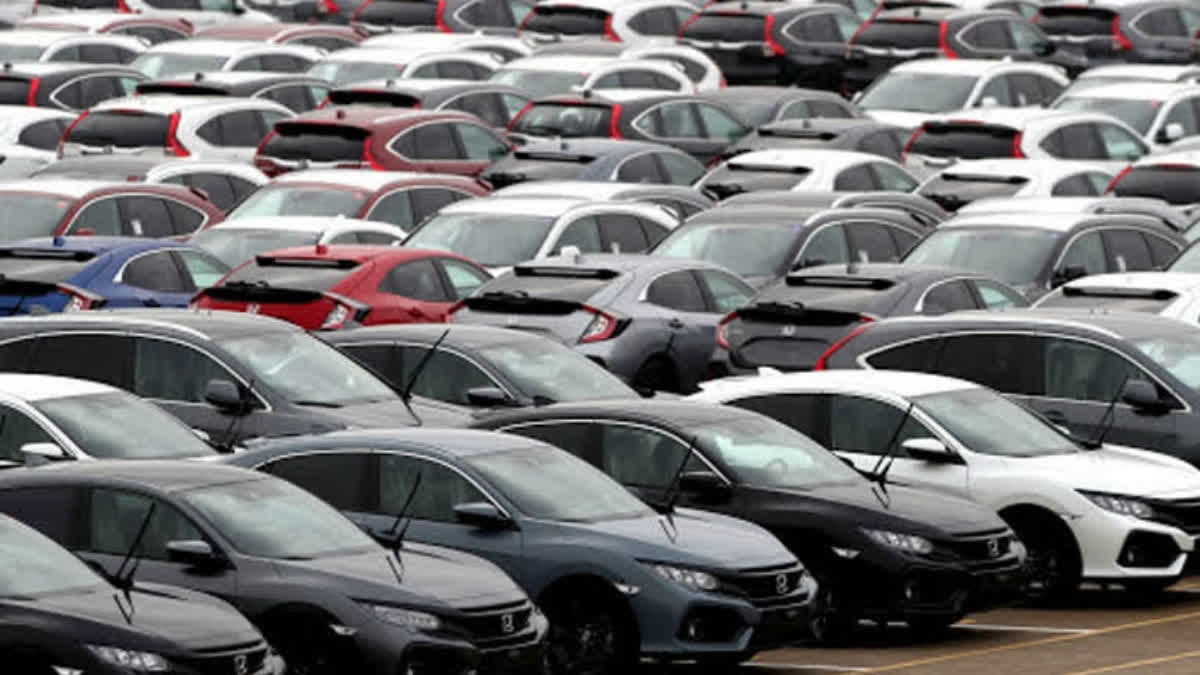New Delhi:Traversing from being just vehicle manufacturers to mobility solutions providers amid a raging debate over which eco-friendly technology must be incentivised, the Indian automobile industry is driving in the new year under the shadow of a slowdown in sales with the post-pandemic pent-up demand in distant memory.
The shift in the auto industry -- where advanced technologies like autonomous driving, vehicle intelligence, connected features and electrification are quickly gaining traction -- will be reflected in the upcoming Bharat Mobility Global Expo in which India's flagship Auto Expo has been clubbed to be held from January 17-22, 2025 in Delhi-NCR.
With India making its presence felt in the global automotive landscape, automakers are expected to showcase their new models with varied powertrain technologies across multiple price points, catering to different sets of customers at the expo as the adoption of environment-friendly cars is slated to gather pace in 2025.
While electric vehicles remain at the forefront of the journey towards sustainable mobility, the industry, especially the passenger vehicles (PV) segment, is witnessing louder calls for supporting other technologies like strong hybrids, biofuels, and biogas, besides CNG.
However, for consumers, buying a new car or an SUV in 2025 will become an expensive proposition as all the manufacturers, from mass market to luxury, have decided to hike prices from January to partially offset rising input costs. "India is now achieving a global scale. We see immense potential in the long-term growth of the Indian automobile industry," Maruti Suzuki India MD and CEO Hisashi Takeuchi told PTI.
The car market leader is looking for accelerated growth in the coming years. "As we embark on the next phase of our growth journey from 2 million to 4 million capacity, we plan to achieve in the next 7-8 years what we accomplished in the last 40 years," he noted.
As for 2025, he said the company is looking forward with "immense enthusiasm" to the new year as it gears up to foray into the battery electric vehicle (BEV) segment with the unveiling of eVITARA, a global model manufactured in India for the world.
Takeuchi, however, said along with BEVs, Maruti Suzuki India will advance its efforts towards a carbon-neutral society through a multi-pathway approach, including hybrids, CNG, and carbon-neutral fuels like ethanol and biogas. Homegrown Tata Motors, the current leader in electric mobility in the PV segment, is looking to double down on its sustainable mobility drive.
"Tata Motors is in a strong position to make the most of key shifts in the industry, from the growing demand for greener, emission-friendly powertrains to safer cars and SUVs," Tata Motors Passenger Vehicles MD Shailesh Chandra said, adding that the company remains optimistic about the growth of the Indian passenger vehicle market in 2025.
Further, he said, "In the EV space, we are focused on strengthening our leadership while tapping into the rising opportunities. At the same time, we will stay committed to enhancing customer satisfaction and delivering an exceptional experience at every touchpoint of their journey with us".
JSW MG Motor India Chief Commercial Officer Satinder Singh Bajwa said the company aims to make the EV segment more attractive and accessible and will seek to play a crucial role in driving India towards becoming the top global automobile market.
"With a significant shift towards electric vehicles, which is expected to grow by threefold in 2025, our focus on NEVs (new energy vehicles) will remain central to our business strategy to make the EV segment more attractive and accessible," he noted.
Even as EVs remain at a sweet spot, with a GST rate of 5 per cent, according to Toyota Kirloskar Motor Executive Vice President and Country Head Vikram Gulati, other eco-friendly technologies must also be considered for proportionate tax incentives.
